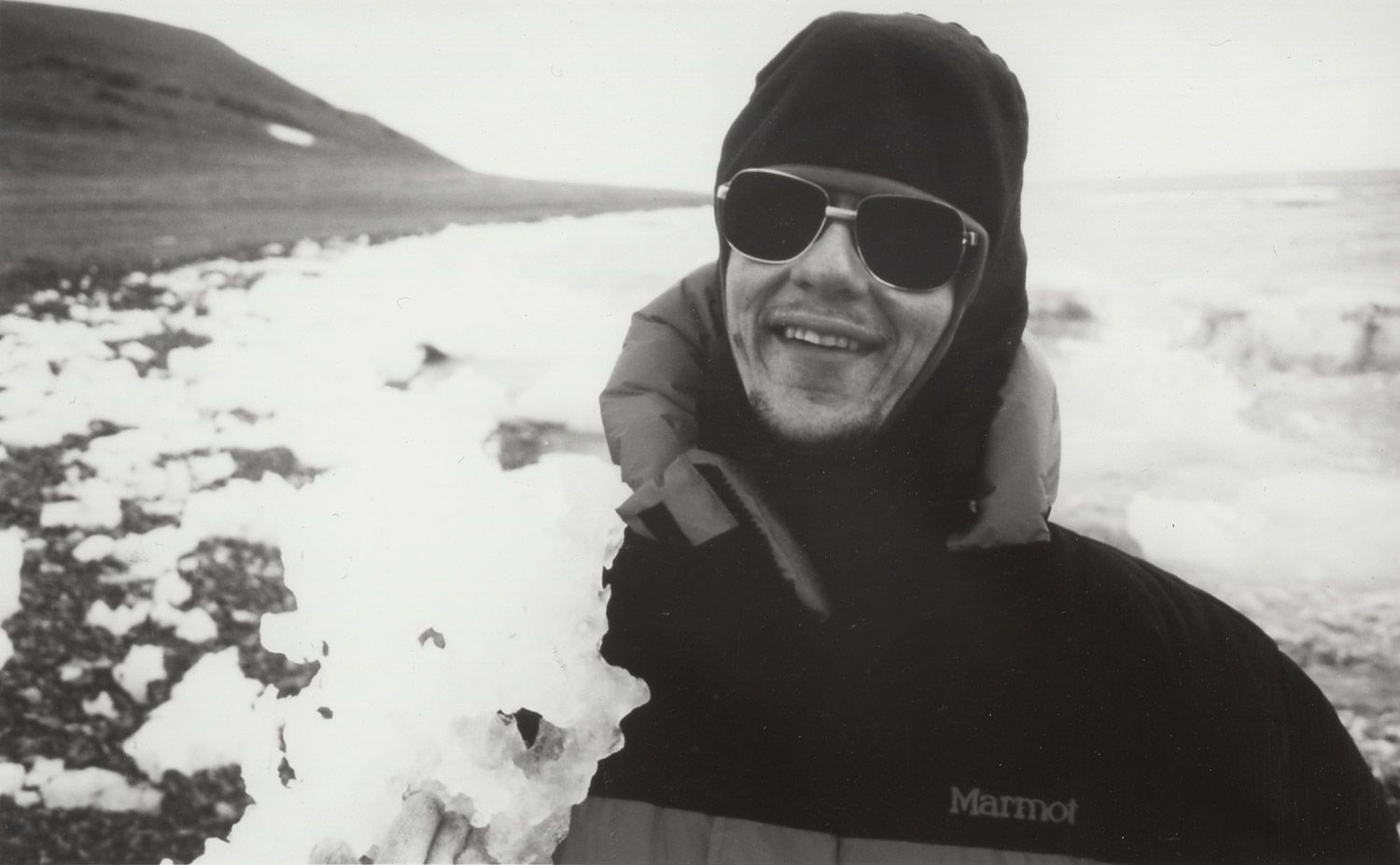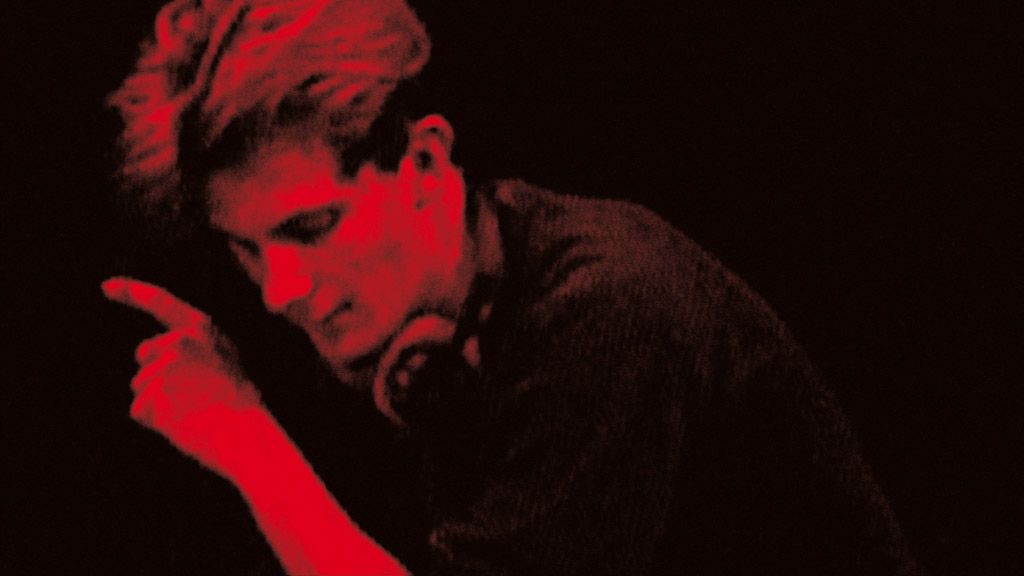WILLIAM T. VOLLMANN: Conflict, Compassion and the Process of Understanding
|Alexander Provan

When WILLIAM T. VOLLMANN was 22 years old, he decided that he would write a book about the plight of the Afghan people, who were then engaged in battle against the Soviets. He planned to travel to Pakistan and document the misery of Afghan refugees, then sneak across the border and photograph the courageous deeds of the mujahideen struggling to repel the invaders. In addition to the written account of his journey, he would produce a slide show and present it at fundraising events back home in California: Vollmann’s neighbors would be so affected by the wretchedness of his subjects and the righteousness of their cause that they would open up their check books right then and there (and later place calls to their local representatives). Before leaving, Vollmann wrote former U.S. Secretary of Defense Robert McNamara, who had been one of the primary architects of the Vietnam War, for advice.

“How might I best, in your opinion, increase our understanding and sympathy for people of Asia and the Third World in general?” he asked. “What things will I see in Pakistan (and along the Afghanistan border), the significance of which I as an American might miss?” less than a week later, McNamara wrote a terse response on the same page Vollmann had sent him, and mailed it back to the would-be author. “Show how much the peoples of Asia are doing to help themselves,” McNamara said, and therefore “how much they deserve and will benefit from the small amounts of assistance we send to them.”
And so Vollmann set out for Peshawar, where he took photographs and conducted interviews, seeking information that could determine the most deserving candidates for American aid. After much wrangling, he foisted himself upon a group of mujahideen heading for the front lines, and though he came down with dysentery and had to be dragged and carried through the Hindu Kush mountains, he eventually tasted battle. In that virginal experience of combat – the commencement of a decades-long obsession with the ways in which we kill each other – Vollmann finally recognized the yawning, insuperable gap between these Muslim soldiers and himself. “They were fighting and I was not,” he writes in An Afghanistan Picture Show: Or, How I Saved the World, which was published ten years after his journey. “They were accomplishing the purpose of their lives in those endless night moments of happiness near death.”
“He has become renowned for doing what writers tend not, or ought not, to do: communing with the wretched of the earth, plying them with questions, riding the rails with them, getting drunk with them, shooting guns with them, smoking crack with them, having sex with them, and oftentimes paying them for their time.”
What did Vollmann accomplish in Afghanistan? And in the years since – during which he has written nine novels, three short-story collections, and five works of nonfiction (including Rising Up and Rising Down, a 3,500-page treatise on violence published in 2003) – what has Vollmann seen that the less intrepid, less reckless, and less painstakingly observant among us might have otherwise missed? Rather than returning home with a slide show for muhajideen sympathizers, Vollmann brought with him a clear sense of his own ignorance. The presumption that he could go to a place, gain some understanding of the people there, and represent them in such a way as to provoke sympathy for them among perfect strangers, had proved ridiculous. In An Afghanistan Picture Show, he writes of beholding a photograph he took of a woman he interviewed in an Afghan refugee camp, and remarks on his failure: “I can’t forget her, but she isn’t alive.”
WILLIAM THE BLIND AND THE SHADOW OF FAILURE
The mark of that experience has animated Vollmann’s writing ever since, whether in his sprawling novels, epic works of nonfiction, or relatively reined-in articles for magazines like Harper’s, The New Yorker, Spin, Playboy, and Esquire. He has chased the shadow of his failure across thousands of pages and scores of countries, from San Francisco whorehouses (his haunt of choice) to Arctic Inuk villages to Calexico drug dens to Kazakh oil towns to Yemeni fishing villages. He has become renowned for doing what writers tend not, or ought not, to do: communing with the wretched of the earth, plying them with questions, riding the rails with them, getting drunk with them, shooting guns with them, smoking crack with them, having sex with them, and oftentimes paying them for their time. Vollmann lurks insistently, whether asking alcoholic mothers in the shantytowns of Bangkok why they are poor, as he does in Poor People (2007), or nearly freezing to death in order to replicate the experience of doomed Arctic explorer Sir John Franklin, as he does in his novel The Rifles (1994). Through all this, Vollmann has not just laid bare the relationship between a writer and his subjects, but also made an art of unsettling, perverting – and occasionally perfecting – that bond.
The risks Vollmann has taken – both in life and literature – in order to do so have been duly rewarded: he received a national Book Award in 2005 for his novel Europe Central, and was named a finalist for the national Book Critics Circle Award, among other accolades; and before he had entered middle age (he’s now 50), he was often hailed as the most “promising” young writer in the U.S. But these risks are at times maddening, their logic elusive, their contribution to the story at hand unclear. There are baroque bursts of prose that go on for pages, great accumulations of data, narratives that meander to the point of dissolution. There are the gut- wrenching, cringe-inducing scenes of Vollmann – who, despite his affinity for handguns, battlefields, and the Arctic wilderness, maintains the persona of an overly eager, sometimes heedless, man-child – abducting a juvenile sex-slave from her Thai pimps, or taking fire in the streets of Mogadishu. The characters in his novels are almost always fashioned from historical personages or people he has met in his travels, and he approaches them with the same weird combination of attention and abandon. While writing The Rifles, one of three completed volumes in his “Seven Dreams” septet – a rewriting of the history of north American colonial encounters and their legacy – Vollmann frequented an Inuk village where he befriended a destitute alcoholic girl named Reepah, who appears as one of the story’s main characters (and is reconfigured as an Inuk goddess over the course of the novel). In the book, Vollmann himself takes on the moniker William the Blind, whose travels among the Inuit mirror those of Franklin and his party. In order to better understand Franklin’s misguided 1845 effort to find the Northwest Passage, Vollmann moved to the magnetic North Pole for two weeks. There he inhabited a forsaken weather station, hoping to “learn something about loneliness and fear.” He succeeded: The cold turned the fur fringe of his hood into Brillo, splintered the plastic of his face mask, rendered his sleeping bag useless. He began to hallucinate from lack of sleep, and eventually incinerated his sleeping bag while trying to dry it. Unlike Franklin, Vollmann was saved by a rescue plane before he died. Similarly perilous episodes populate Rising Up and Rising Down, including an incident in Bosnia when a land mine exploded under his car, killing his two companions. “I’m … trying to come up with some sort of moral calculus for [violence],” he explained pithily when the book – the culmination of 20 years of heavy reading and personal endangerment – was in its infancy. “The best way to do that is to have some case studies of wars. So I want to keep seeing them.”
SEE EVERYTHING, READ EVERYTHING, WITNESS EVERYTHING
Vollmann’s compulsion to see everything, read everything, witness everything, and confess everything is equally neurotic and ambivalent. There is an underlying anxiety that, no matter how detailed and sweeping his maps are, they will never show us these other worlds, and other lives, in their entirety. At the same time, he knows that the task is futile, that these worlds can never be described with anything like verisimilitude; so he regularly discards the map-in-progress and lets the reader drift upon a sea of impressions and facts. Vollmann seems most interested in our failure to understand the world, our inability to devise representations that can encompass it, and the strength of our desire to keep doing so nevertheless. The resulting existential drift is neatly encapsulated in the first few pages of The Rifles. “The gravel- ridges were endless,” Vollmann writes, describing his pursuit of the source of an Arctic stream:
“They were all around you like the waves of that Arctic ocean that you had tried to reach; now you were in the middle of it and there was nothing else but its rising falling insidiousness; nevertheless you insisted on following your stream to its origin; you were determined to come to someplace definite …. And you went over another little rise and there was a lake whose waters rippled black and blue and orange and silver, and there was a jet-black ridge behind it topped with blue clouds, and the lake went on and on and on and there was another lake behind it and streams ran out of that lake in all directions and at last you understood that the river you had followed had no one source; that these lakes were from permafrost melt; the whole island was permafrost; when you were on the island you were in a world of rivers that came from everywhere.”
While so many authors endeavor to create perfectly packaged narratives staged in worlds resembling, or cleverly modulating, our own – works that might be heralded as “triumphs” – Vollmann has been happy to traffic in the grand failure. (Not that his books are unloved, or that he has labored in obscurity; but many more know the myth of Vollmann the prodigious talent – by age 35, his hands were crippled from writing for 16 hours a day – than have gotten through any of his books.) And while the naïveté of youth is everywhere applauded, he has worked indefatigably – some might say maniacally – to overcome the ignorance of the boy he sardonically refers to in An Afghanistan Picture Show as “The Young Man Who Knew Everything,” who expects the world to divulge its secrets to him, and people to reveal their essences on command. All the while, Vollmann has strived to rehabilitate that boy’s idealism and, despite all obstacles, confront readers with a genuine account of lives very unlike their own.

GOOD INTENTIONS ON THE ROAD TO HELL
“My attempts to do good, however, hav[e] been disasters thus far,” Vollmann writes in The Rainbow Stories (1989), a collection of tales as told to him by denizens of the streets of San Francisco’s Haight-Ashbury district. “I have become a mere recording angel instead of a michael or gabriel (in whom I do not believe).” Imperial (2009), his latest book – at least until April, when Kissing the Mask: Beauty, Understatement and Femininity in Japanese Noh Theater will claim that title for a few months – is a 1,300-page testament to Vollmann’s hunger for the lives of others and the facts that shape them. It is also a failure so epic as to rival that of its subject: the desiccated, defiled, and impoverished stretch of erstwhile frontier conjoining California, Arizona, and Mexico. Imperial began as a work of fiction, Vollmann tells us; he often reminds readers that the barbell of a book in their hands is but an artifact of “the novel which I originally meant to write about Imperial.” It is a compendium of documents, notes, and interviews, a collage that seems to include everything Vollmann has learned about or done in Imperial County in the past decade, from agricultural production data to excerpts from historical documents to days spent driving through the desert with the likes of “Juan the cokehead.”
The story is a parable perfectly suited for Vollmann: At the turn of the 20th century, unchecked ambition led the West’s pioneers (and related corporate interests) to siphon off the Colorado River and redirect the water into the barren Imperial Valley, turning it into productive farmland. But the water didn’t last, and the pesticides and industrial waste poisoned the place, and the idyllic farms were consolidated into agribusiness conglomerates, which went on to make their profits off the backs of mexican migrants. What had been a vast, unbroken landscape was partitioned and parceled into a sad composite of nearly dead townships flanked by suburban sprawl and a militarized border. Like the land, Imperial is hopelessly fragmented – not because its story is best told in that form, but because Vollmann has found it impossible to make the place cohere. He wavers between myth and economic data, searching for meaning in the heavens, public records, mexican folk songs, and native American traditions. A border officer is not just hunting for mexicans, but “play[ing] his part in the work first begun by Eden’s angel with the flaming sword, the methodical patrols and prowls to keep the have-not millions out of paradise – which in this case was Imperial County, California, whose fields of blondeness, of endless pallid asparagus, onion plants like great lollipops and honey-colored hay bales produced the lowest median tax income of any county in the state.” This is heaven ruined, and, to Vollmann, because it has been ruined it has also been redeemed.
Credits
- Text: Alexander Provan


